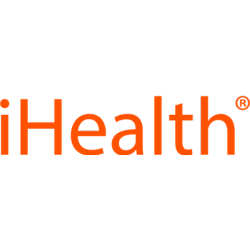Heart Disease: Risk Factors and What to Do
Risk factors are conditions or behaviors that increase your chances of developing a disease. When you have more than one risk factor for heart disease, your risk of developing heart disease greatly multiplies. So if you have high blood pressure, you need to take action. Fortunately, you can control most heart disease risk factors.

Risk factors you can control:
- High blood pressure
- Tobacco use
- Abnormal cholesterol
- Diabetes
- Overweight
- Physical inactivity
Risk factors beyond your control:
- Age (55 or older for men; 65 or older for women)
- Family history of early heart disease (having a father or brother diagnosed with heart disease before age 55 or having a mother or sister diagnosed before age 65)
Monitor Your Blood Pressure

People who do not have high blood pressure at age 55 still face a 90 percent chance of developing it during their lifetimes. So high blood pressure is a condition that most people will have at some point in their lives. Both numbers in a blood pressure test are important, but for people who are age 50 or older, systolic pressure gives the most accurate diagnosis of high blood pressure. Systolic pressure is the top number in a blood pressure reading. It is high if it is 130 mmHg or above.
Monitoring your blood pressure at home between visits to your doctor can be helpful. You also may want to bring a family member with you when you visit your doctor. Having a family member who knows that you have high blood pressure and who understands what you need to do to lower your blood pressure often makes it easier to make the changes that will help you reach your goal.
Manage Your Weight
Being overweight or obese increases your risk of developing high blood pressure. In fact, your blood pressure rises as your body weight increases. Losing even 10 pounds can lower your blood pressure—and losing weight has the biggest effect on those who are overweight and already have hypertension. Overweight and obesity are also risk factors for heart disease. And being overweight or obese increases your chances of developing high blood cholesterol and diabetes—two more risk factors for heart disease.
Stay Active
Being physically active is one of the most important things you can do to prevent or control high blood pressure. It also helps to reduce your risk of heart disease. It doesn’t take a lot of effort to become physically active. All you need is 30 minutes of moderate-level physical activity on most days of the week. Examples of such activities are brisk walking, bicycling, raking leaves, and gardening.

You can even divide the 30 minutes into shorter periods of at least 10 minutes each. For instance: Use stairs instead of an elevator, get off a bus one or two stops early, or park your car at the far end of the lot at work.
If you already engage in 30 minutes of moderate-level physical activity a day, you can get added benefits by doing more. Engage in a moderate-level activity for a longer period each day or engage in a more vigorous activity.
Most people don’t need to see a doctor before they start a moderate-level physical activity. You should check first with your doctor if you have heart trouble or have had a heart attack, if you’re over age 50 and are not used to moderate-level physical activity, if you have a family history of heart disease at an early age, or if you have any other serious health problem.
Eat Responsibly
What you eat affects your chances of getting high blood pressure. A healthy eating plan can both reduce the risk of developing high blood pressure and lower a blood pressure that is already too high. For an overall eating plan, consider DASH, which stands for “Dietary Approaches to Stop Hypertension.”
You can reduce your blood pressure by eating foods that are low in saturated fat, total fat, and cholesterol, and high in fruits, vegetables, and low-fat dairy foods. The DASH eating plan includes whole grains, poultry, fish, and nuts, and has low amounts of fats, red meats, sweets, and sugared beverages. It is also high in potassium, calcium, and magnesium, as well as protein and fiber. Eating foods lower in salt and sodium also can reduce blood pressure.
The number of servings that is right for you may vary, depending on your caloric need. The DASH eating plan has more daily servings of fruits, vegetables, and grains than you may be used to eating. Those foods are high in fiber, and eating more of them may temporarily cause bloating and diarrhea. To prevent this, increase the amount of these slowly.
Summary
Monitoring blood pressure regularly, stopping smoking, managing weight by staying active and eating responsibly can all help with lower the risk of developing heart disease. You can also contact your dietitian to come up with a personalized diet plan.
This feature is coming soon
-
July 09, 2024
-
May 08, 2024
-
March 04, 2024
This feature is coming soon
You May Also Like
Title placeholder
posted_date placeholder
Title placeholder
posted_date placeholder
Title placeholder
posted_date placeholder
Title placeholder
posted_date placeholder
Title placeholder
posted_date placeholder
Title placeholder
posted_date placeholder
Title placeholder
posted_date placeholder
Title placeholder
posted_date placeholder
Title placeholder
posted_date placeholder
Title placeholder
posted_date placeholder
Title placeholder
posted_date placeholder
Title placeholder
posted_date placeholder
Title placeholder
posted_date placeholder
Title placeholder
posted_date placeholder
Title placeholder
posted_date placeholder



